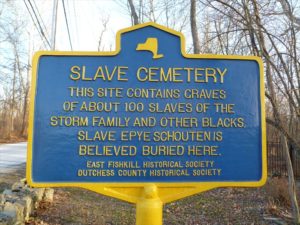 Records of enslaved persons and slave holders include cemetery information, and records can be searched based on cemetrey locations. Cemeteries are identified based on a TAG that consists of the term CEM, the location zip code, and the letter A for the first cemetery in that zip code, B for the next and so forth. For example, CEM10538A is the first cemetery we encountered in zip code 10538.
Records of enslaved persons and slave holders include cemetery information, and records can be searched based on cemetrey locations. Cemeteries are identified based on a TAG that consists of the term CEM, the location zip code, and the letter A for the first cemetery in that zip code, B for the next and so forth. For example, CEM10538A is the first cemetery we encountered in zip code 10538.
This report is continuously updated because we have only begun to code cemetery records at the individual level. As more records are indexed to include the cemetery information, the table in this report will be dynamically updated.
These tables are collapsed by county, so the records for any county can be expanded by clicking no the name of the county. Then, the cemetery codes are displayed, and the number of cemetery records for each cemetery are displayed, with separate columns for enslaved persons and slave holders. Once you click on a number, all the records associated with that cemetery and record type are displayed.
Any individual record can be fully viewed by clicking on the highlighted field in the first column of each record. However, in order to see all the records associated with an individual person (not just the cemetery records), enter the name of the person in the general SEARCH field from the main menu and all of the records will be listed.
The first table presents enslaved persons. Note that, for those enterred in the Second African Burial Ground, it is not possible to determine whether people were enslaved at the time of death, were emancipated at the time of death, or born free.They are included in this list if the person lived when it is possible that at some point the person was enslaved. As additional information emerges, some of these people can be removed from this list.
The second table presents slave holders.



